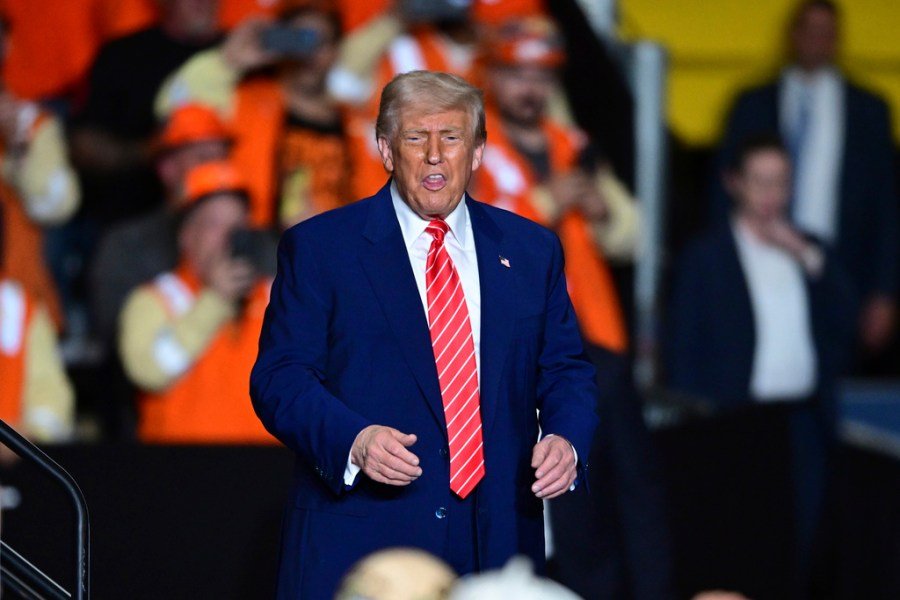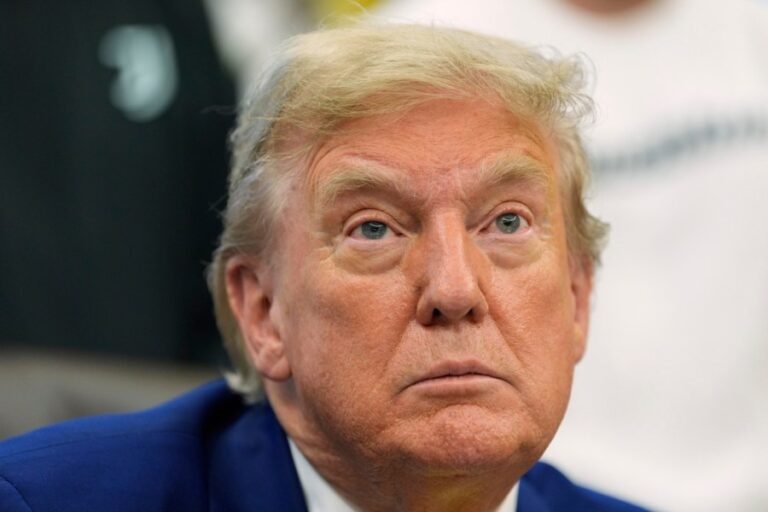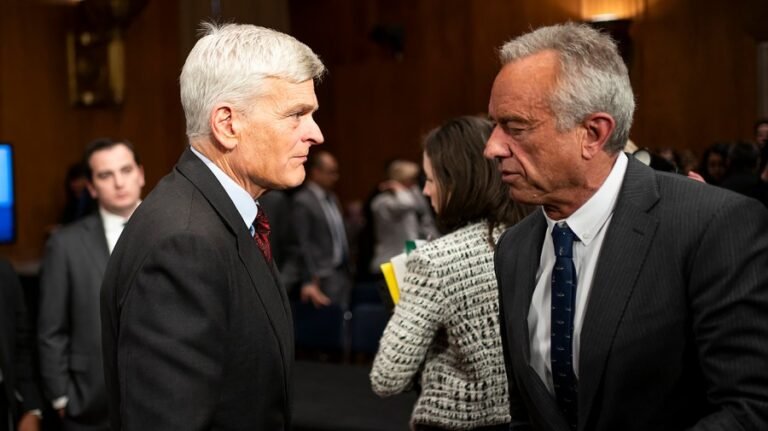
President Trump threatened to impose a 50 percent tariff on all goods coming into the U.S. from the European Union, as he ruled out striking a trade deal with Brussels. This strategy would hit the continent hard, hurt the U.S. economy and slow growth globally.
The ripple effects could upend global stability if he follows through. It is unclear what exactly Trump wants. He continues to fuel global economic uncertainty with erratic and unpredictable trade policy.
Trump’s tariff hikes are more than a negotiating tactic; they are a reckless gamble that could lead to a dreaded combination of higher inflation and slower growth in the U.S.
Europe could be pushed into a recession and it could disrupt global stability. By raising tariffs on the European Union — already a tense partner — the administration is undermining years of trade negotiations and risking a broader trade war that could hurt consumers, businesses and geopolitical cohesion. This isn’t just about dollars and cents; it’s about weakening trust in a world that’s already on edge.
Trade isn’t just about shipping containers and balance sheets. It is the glue that holds alliances together. The U.S. and EU are each other’s largest trading partners, with $1.3 trillion in goods and services flowing annually. When Trump slaps a 50 percent tariff on European cars, steel or wine, it’s not just BMW or Bordeaux winemakers who feel the pinch. American consumers face higher prices, businesses lose access to markets and allies question U.S. reliability.
Add in the fact that Trump is already sparring with China and rattling Canada and Mexico, and you’ve got a recipe for global economic chaos. People care because this could mean pricier groceries, disrupted supply chains and a hit to jobs — while potentially alienating allies we need for bigger fights, like countering China or Russia.
On April 2, 2025, Trump announced a 10 percent global tariff and a 20 percent “reciprocal” tariff on EU imports, citing a $230 billion trade deficit and accusing the EU of exploiting the U.S. through value-added taxes and currency manipulation. The EU, blindsided, offered a “zero-for-zero” deal on industrial goods, but Trump doubled down, pausing most tariffs for 90 days except for China’s, which soared to 145 percent. Then, on May 23, he upped the ante with a 50 percent tariff threat on the EU, effective June 1 but delayed to July 9 after a call with EU Commission President Ursula von der Leyen.
The economic fallout is already visible. The S&P 500 tanked nearly 5 percent on April 3, its worst drop since 2020, as markets braced for a trade war. Economists estimate Trump’s tariffs could shave 0.8 percent off U.S. GDP and cost households $1,200 annually. Germany, the world’s top auto exporter, faces a potential 0.2 percent GDP hit, and that’s before retaliatory measures kick in.
Small businesses, from Amazon sellers to Polish manufacturers, are scrambling as supply chains buckle. A Reuters-Ipsos poll in April showed that 73 percent of Americans expect price surges, and 57 percent oppose the tariffs. Although Trump advisors such as Peter Navarro shrug off market panic as “no big deal,” others, like Treasury Secretary Scott Bessent, admit that negotiations could drag on.
Geopolitically, the timing couldn’t be worse. The EU, a key NATO partner, is already strained by Ukraine’s war and energy woes. Trump’s tariffs risk pushing allies like Poland and Germany — stalwart U.S. supporters — into a corner, forcing them to choose between economic pain and capitulation.
Meanwhile, China’s Xi Jinping, who faced down Trump’s 145 percent tariffs with a 125 percent counterpunch, is watching the West bicker. The Geneva talks in May de-escalated U.S.-China tariffs to 30 percent and 10 percent, respectively, but the 90-day truce is shaky, and Beijing’s small businesses are already pivoting to other markets. If the U.S. alienates both Europe and China, it could weaken its leverage against global rivals.
Trump’s defenders argue this is a masterstroke to force fairer trade terms and boost U.S. manufacturing. They point to the U.K. deal on May 9, which lowered some tariffs, as proof of success. But that deal’s modest scope — covering agriculture and cars — pales against the complexity of EU or China negotiations.
Critics like Scott Kennedy at the Center for Strategic and International Studies call the China truce a “U.S. retreat” with no real concessions. The EU talks, bogged down by mistrust, face a July 9 deadline with no clear path forward.
Trump’s tariff escalation is like tossing a match into a dry forest — it might burn out quickly, or it might spark a wildfire. The temporary pause with the EU buys time, but without a clear strategy, we’re staring down a barrel of higher prices, fractured alliances and a global economy on the brink.
This huge tariff on European imports will definitely backfire, making American products more expensive to produce. This escalation needs a diplomatic solution as tariffs would harm both economies. This isn’t just drama; it’s a reckless bet that could reshape trade for the worse. If Trump wants to avoid a messier shakeup, he’ll need to swap the sledgehammer for a scalpel — fast. Otherwise, we’re all paying the price for this transatlantic tantrum.
Brabim Karki is a commentator and author of the books “Mayur Albatross” and ”Osin Fisher.”


